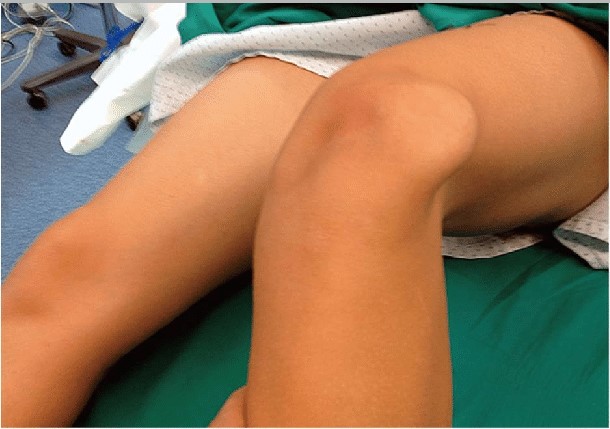Introduction:
- Recurrent Patellar Dislocation is a significant knee condition characterized by the repeated displacement of the kneecap (patella) from its natural position.
- It is a common issue, particularly affecting young athletes, leading to chronic instability and discomfort.
- Trochlear dysplasia (shallow groove), patella alta (high – riding kneecap) and excessive genu valgum (knock- knees).
Definition:
- The repeated slipping of the patella out of the femoral trochlear groove, typically moving laterally.
- This condition contrasts with an initial traumatic dislocation and indicates underlying anatomical instability.
- This mostly occurs as a disruption of the medial patellofemoral ligament.
Cause:
- Anatomical factors: Trochlear dysplasia (shallow grove), patella alta (high-riding kneecap) and excessive genu valgum (knock- knees).
- Soft tissue injuries: Damage or rupture of the patellofemoral ligament (MPFL) from previous dislocations.
- Genu recurvatum
- Increased Q Angle
- Patellar hypermobility
Clinical Features:
- A characteristic sensation of the knee “giving way” or “slipping out of place”.
- The individual may experience patellar apprehension, a feeling of fear or instability when the kneecap is moved.
- Locking of the knee after the trauma
Sign & Symptoms:
- Sudden, sharp pain and a visible deformity during a dislocation episode.
- Immediate swelling and tenderness around the kneecap.
- Difficulty bending or straightening the knee after an episode.

Physiotherapy Management:
- Strengthening exercises focusing on the quadriceps, especially the vastus medialis obliquus(VMO), to improve patellar tracking.
- Proprioceptive and balance training.
- Use of knee braces or taping to provide external support and guidance.
- Stretching: Improve flexibility of hamstrings and quadriceps.
Surgical Management:
- Recommended for persistent instability unresponsive to conservative treatment or in cases of significant anatomical abnormality.
- Common procedures include MPFL reconstruction to stabilize the kneecap.
- In specific cases, osteotomies or trochleoplasty may require to correct bony deformities.
Conclusion:
- Recurrent patellar dislocation requires a precise diagnosis and personalized treatment plan.
- A combination of physiotherapy and targeted surgical intervention provides the best approach for restoring stability and function.

